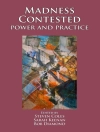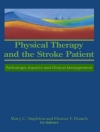Expression of an immune response is the net result of complex synergis- tic and antagonistic activities performed by a variety of cell types. It includes macrophages, T and B populations which may interact in performance of a response, and suppressor cells interfering with it. Accordingly, a lack of res- ponse may not necessarily indicate absence of immunocompetent cells, but rather nonexpression of competence. Thus, one should consider two possible situations, which are by no means mutually exclusive, to account for immuno- logic unresponsiveness: (a) one or more of the cell populations composing the synergistic unit is absent or immature, and (b) an antagonistic unit which interferes with the response is dominating. In view of this, an approach to development of immune reactivity necessitates parallel surveys of development of cells with the potential to perform, as well as of cells which can suppress the response. Classification of the various cell types has been based so far on their phenotypic properties (e. g. , membrane antigen markers, cell receptors, pro- duction and secretion of immunoglobulins, etc. ). Genotypically, T and B cells may represent either separate, independent cell lines, or different stages of development within the same cell lineage.
W. Arber & W. Henle
Current Topics in Microbiology and Immunology / Ergebnisse der Microbiologie und Immunitatsforschung [PDF ebook]
Current Topics in Microbiology and Immunology / Ergebnisse der Microbiologie und Immunitatsforschung [PDF ebook]
قم بشراء هذا الكتاب الإلكتروني واحصل على كتاب آخر مجانًا!
لغة الإنجليزية ● شكل PDF ● ISBN 9783642665301 ● الناشر Springer Berlin Heidelberg ● نشرت 2012 ● للتحميل 3 مرات ● دقة EUR ● هوية شخصية 6329739 ● حماية النسخ Adobe DRM
يتطلب قارئ الكتاب الاليكتروني قادرة DRM












